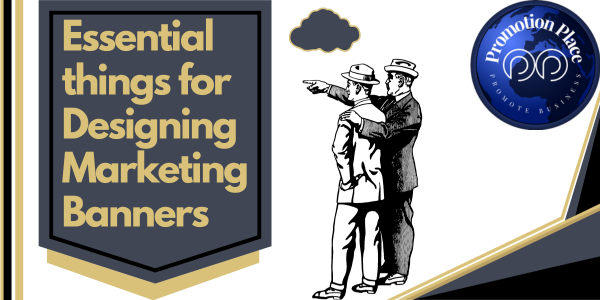Here are some essential things for designing marketing banners that grab attention and get results:
Target audience:
Who are you trying to reach?
Understanding their demographics, interests, and online behaviour will guide your design choices.
What message do you want to convey?
Keep it concise and relevant to your audience's needs and desires.
Visual impact:
Stand out from the clutter!
Use bold colours, high-quality images, and unique typography to catch the eye. Incorporate subtle shadows, gradients, or animation to add depth and dimension.
Don't be afraid to use asymmetrical layouts or unexpected crops to stand out from the crowd.
Experiment with vibrant, complementary colours to make your banner pop. Consider using a "pop of colour" against a neutral background for maximum impact.
Choose visuals that connect with your audience on an emotional level. Humour, surprise, or awe can be powerful tools.
Play with contrasting elements like textures, patterns, or even live-action videos overlaid on static images.
Prioritize visual hierarchy.
Place the most important element – your headline or call to action (CTA) – in the prime viewing spot.
Make your headline the biggest and boldest element, followed by key messages and CTAs. Consider using leading lines or arrows to direct the viewer's eye.
Maintain visual balance.
Make sure to leave your banner with enough information or competing elements. Don't overload your banner with text.
Use generous white space to make your message more readable and impactful.
Try 3D effects on your text for added emphasis.
Clarity and messaging:
Keep it simple!
People have limited attention spans online. Use short, punchy headlines and bullet points to deliver your message quickly.
Highlight the benefits, not just the features.
Explain how your product or service solves a problem or improves their lives.
Use strong verbs and action words.
Encourage clicks with specific CTAs like "Shop Now," "Learn More," or "Download Today."
Technical considerations:
Choose the right size and format.
Different platforms have different banner size requirements. Choosing the right size and format for your marketing banner is crucial for ensuring it gets seen and clicked on.
Different platforms and placements have specific requirements, and using the wrong size can lead to your banner getting cut off or looking distorted.
Platforms you can use for placing your marketing banners are website, social media, emails and mobile.
The effective sizes for different platforms vary.
Website marketing banner size
For websites, you can consider the following:-
Leaderboard: 728px wide x 90px high - This is the most popular banner size for websites, often placed at the top of the page.
Medium Rectangle: 300px wide x 250px high - This versatile size is often used in sidebars or within website content.
Square: 250px wide x 250px high - Squares are a good option for showcasing images or logos prominently.
Skyscraper: 160px wide x 600px high - Skyscrapers are tall and narrow banners, often used along the side of a webpage.
Social media marketing banner
For different social media different sizes are considered most effective.
For example, on Facebook 1200 x 628 pixel is best for news feed. For Facebook stories, 1080 x 1080 pixel images are considered effective.
Similarly, for a Twitter header, 1500 x 500 pixels is suitable.
Hence choose the right size and format.
Optimize for fast loading times.
Large file sizes can deter clicks. Fast loading times are crucial for marketing banners, especially in today's fast-paced online world. Users have short attention spans, and a slow-loading banner is likely to be ignored.
Large images are the main culprit behind slow loading times. Resize your images to the exact dimensions needed for the banner platform and use tools like TinyPNG or JPEGmini to compress them without losing quality.
Choose the right format. WebP offers smaller file sizes than JPEG or PNG while maintaining quality. Consider using WebP if supported by your platform.
Utilize lazy loading. This technique only loads images when they become visible on the user's screen, improving initial page load time.
Ensure accessibility.
Use high-contrast colours and legible fonts for everyone to see and understand your message.
Additional tips:
Test and refine!
A/B tests different marketing banner designs and elements to see what resonates best with your audience.
Stay on brand.
Maintain consistency with your logo, colours, and overall brand identity.
Think mobile-first.
More people than ever access websites and ads on their mobile devices. Optimize your banner design for smaller screens.
By following these tips, you can create marketing banners that are both visually appealing and effective in driving clicks and conversions.




.png)











0 Comments